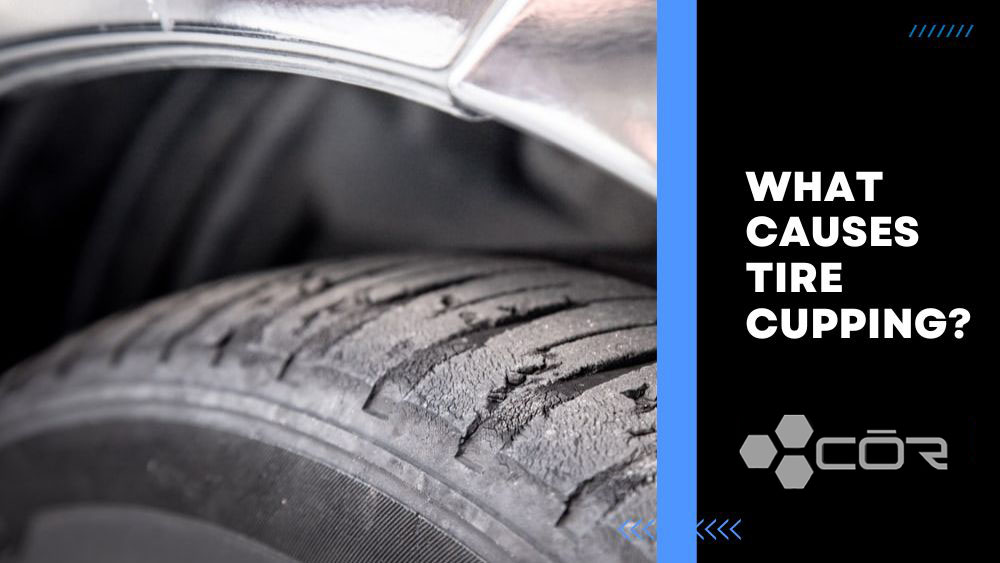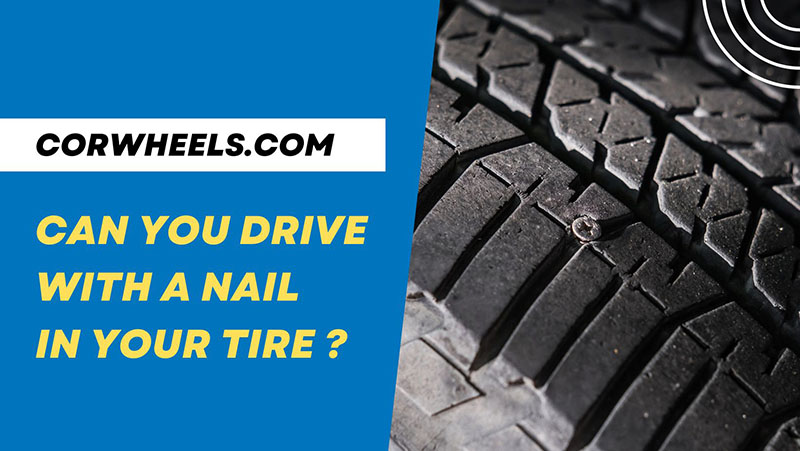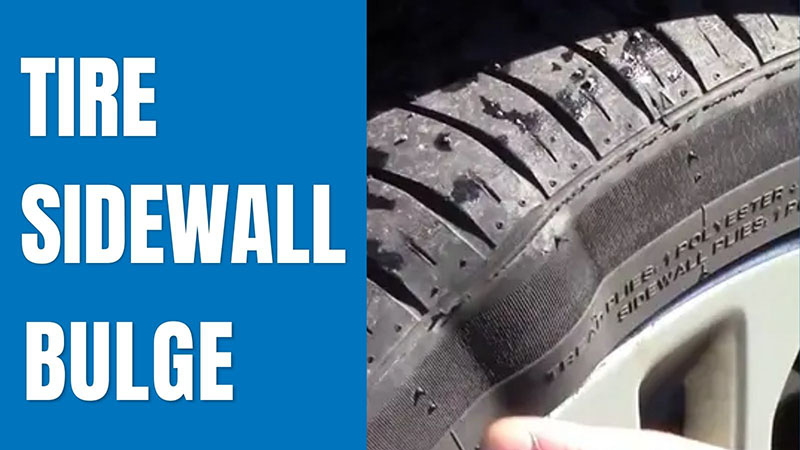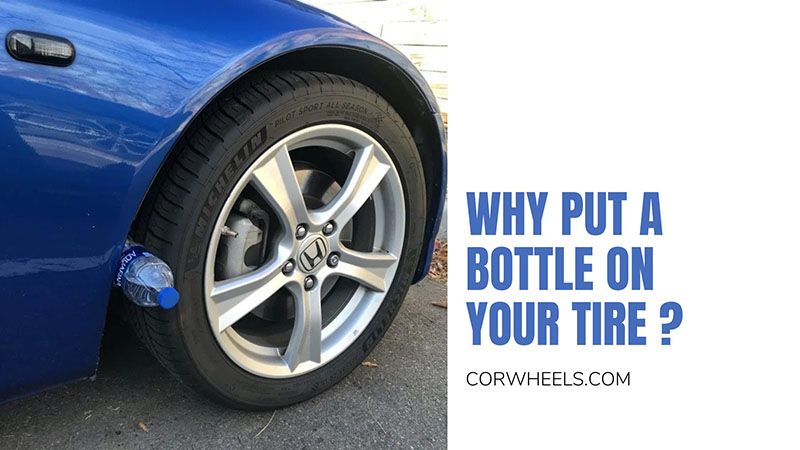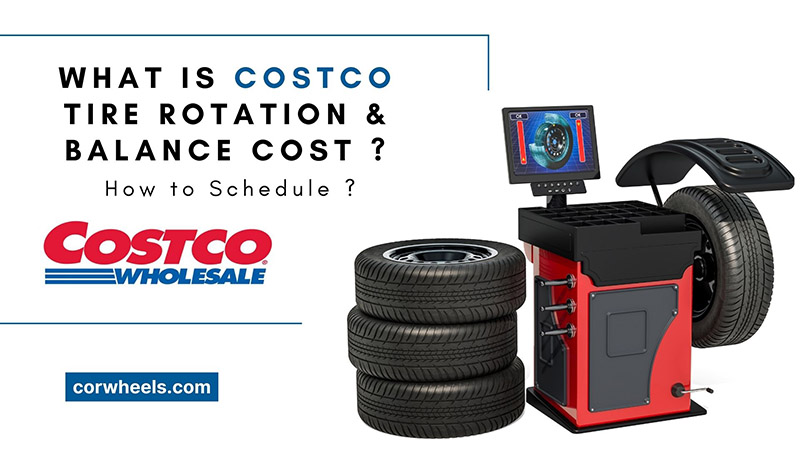Cupped tires, also known as “scalloped tires,” are among the most hazardous kinds of uneven tire wear. It gives the impression that somebody scooped out a portion of the tire tread 3 to 4 inches perimeter. Because of the form of tires worn areas, the name scalloped tires was born.
Most drivers don’t immediately understand what this phrase means. Therefore. we decided to write about it.
Let’s get to all the ins and outs of the causes of tire cupping on front and back tires and how to stop this harmfulness.
In this article:
What Causes Tire Cupping On Front Or Rear Tires?
Tire balance, bent rims, tire quality, and suspension parts are the main cause of tire cupping.
Suspension Parts
The tire’s tread may wear down in some areas more quickly than others if your vehicle is excessively down-bouncing and up-bouncing due to defective struts or shocks.
Your car losing contact on the road in a short term is the recipe for observable “cups,” appearing as craters or dips in the tires over time.
Bent Rims
A pothole hit caused bent rims.
The bent portion is typically on the flange’s inner position, which is difficult to observe from the exterior but obvious from a lift. Most of the time, technicians can fix bent rims instead of replacing them. It can save drivers money, time, and energy.
Cheap Tires
Bad quality tires are the next reason leading to the cupping problem.
The issue will worsen if drivers often travel on bumpy rides, uneven roads or over speed bumps. In certain situations, extremely cheap tires with inferior durability or tread, combined with damage caused by underinflated tires, may also cause tire cupping.
As we all know, the quality of tires varies. Some brands could utilize inferior materials: low-quality rubber makes it easily worn, and steel belts do not have enough power to support the tread.
These tires could be more prone to cupping when mounted on a car with a worn-out suspension or imperfect wheel balancing.
Tire Balance
Question tire balance when your vehicle’s steering wheel vibrates or if you experience a seat vibration.
Mud, snow, grit, and other material can accumulate on the wheel’s interior surface, even though your tires are recently balanced, leading to an unstable situation.
You must examine the tire balance after 3,000 to 6,000 miles since even a tiny 0.25-ounce difference can result in a cupping of the back tire and other issues. By eliminating uneven wear, tire balancing can extend tire longevity by up to 20%.
This upkeep does not cost much time. Sometimes, mechanics technicians just need to adjust 1 gram, and your tires get balanced.
Tire Cupping Signs
Drivers who notice these symptoms should have the suspension & tires on their car inspected by a qualified mechanic.
Vibrating & Shaking
It is simple yet easy to find out if you doubt your steed’s tires are being cupped if your vehicle’s seat & steering wheel are vibrating and shaking.
When the vibration comes from the car steering wheel, the front tires are more likely out of balance, and when the seat vibrates, the rear wheels have a high chance of out-of-balance status.
If both the steering wheel and seat appear to shake, having your tires inspected for imbalances and potential cupping is a must.
Veering Vehicle
Veering vehicles are also one of the signs of cupping.
A car may drift uncontrollably; it can go to the right or left or act erratically during turning due to misaligned tires. Tires that are out of alignment or imbalanced may be cupped.
Consult a competent expert at a repair shop to examine your car’s tires and balance if you experience any of the above issues while driving.
Tire Noise
Cupping tires have a reputation for being particularly loud at high velocities. When you drive on highway speeds, it is pretty clear. You should have your tires evaluated by an expert if you notice an increase in tire sound over time.
Visual Signs
On tires, you may notice tire cupping. Examine the tire’s tread quickly, and once you see any unevenly scooped sections of the worn tire, get the tire changed.
How To Prevent Cupped Tires?

Periodic tire care preservation may come in handy to avoid tire cupping. If you love your vehicle and long for ride comfort, it is a job on your must-to-do list.
The tire can last longer when it is cared for regularly. These procedures involve rotating the tires, balancing and aligning the wheels, and ensuring that the tire pressure is appropriate.
On top of that, despite mileage, your car has to be inspected at least once every six months because driving in various road conditions can damage the general health of your tires.
Below are some additional steps you may take to avoid cupping in besides addressing the primary causes of the problem:
Regularly Rotate Your Tires
From 5000 to 8000 miles is the optimum distance drivers should consider to rotate their tires to ensure uneven wear and cupping at the back tire.
Maintain Tire Pressure Regular Check Schedule
Cupping, among many other problems, can result from over or under-inflation. Check the tires’ air pressure once a week to be sure none of them lose more air than the rest.
Replace Your Tires As Manufactures Advise
Every tire has its best time service, and gradually it becomes weaker. So, whenever the time comes, as the manufacturer advises, you should buy a new one to replace it. Don’t wait until the last minute, or the tire will be of poor quality.
From 4/32″ to less, tires are prone to be susceptible. It can be the main reason for weakened suspension that leads to cupping.
FAQs
Do Bad Shocks Lead To Tire Cupping?
Yes. Bad shocks can trigger tire cupping. It is one of the main reasons for the tire’s uneven wear. The tire is prone to damage from time to time, and cupping tire signs appear.
What Does Tire Cupping Mean?
Tire cupping means choppy tires or tire scalloping. People also call it “ice cream scoop”. It implies the tread depth on the vehicle’s tire measures different heights in random places.
Will An Alignment Fix Tire Cupping?
Yes, if misalignment is the reason causing tire cupping. Whether it is the main reason or not, alignment is one of the steps of fixing tire cupping. Then, tires will be connected to a specialized machine after being taken from your vehicle to smooth out any scooping or cupping.
Can Tire Cupping Be A Result Of Damaged Ball Joints?
Yes. Cupping on the tread’s inner edge signifies worn ball joints. When your hand runs over the tire tread, this cupping, which is typically invisible, should be felt.
Conclusion
Driving while ignoring any damage, like you doubt your tires are cupping but you don’t do anything, is risky, particularly when the deterioration results in vibration and bouncing.
The car loses stability and is less tolerant of additional weight or speed than it would generally be. Premature tire wear or irregular wear might expose its steel belts and cords. A blowout or flat tire might happen as a consequence, so fix it as soon as possible.
See more:

